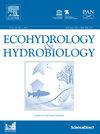Revegetation potential assessment on the Hanfeng Lake of the Three Gorges Reservoir: Evidence from soil seed bank
IF 2.2
4区 环境科学与生态学
Q2 ECOLOGY
引用次数: 0
Abstract
The hydrological regiments of large reservoirs worldwide always are always artificially controlled, significantly impacting the ecosystems of the water level fluctuation zone (WLFZ). In China, the anti-natural periodic water level fluctuation has led to plant diversity decline in the WLFZ of the Three Gorges Reservoir (TGR), causing seriously ecosystem problems. Attempts on revegetation was carried out since 2009, which mainly aimed to re-establish the natural riparian vegetation including trees, shrubs, and herbs. Whereas, the revegetation efficient has not yet been evaluated. To evaluate the effectiveness of the revegetation, the soil seed bank (SSB), aboveground vegetation (AGV), soil physiochemical parameters and inundation disturbance were integrated to assess the potential of revegetation in the WLFZ of the Hanfeng Lake. The results showed that seed reproduction is the main reproductive mode of aboveground communities in both artificial and natural restoration sites. The similarity between SSB and AGV increased as compared to that of the pre-revegetation project implement. The diversity of SSB was higher than that AGV, furthermore, diversity increased on artificial revegetation site was found. The seed density on natural revegetation sites (6396.97 ± 4699.49 seeds/m2) was significantly higher than that of the airtificial restoration site (p < 0.01). Soil nutrients were richer in the restoration sites compared to the reference sites. However, the correlation between soil physiochemical parameters and SSB/AGV varied, indicating that potential succession in vegetation may still occur. Revegetation potential assessment revealed that a slightly higher revegetation ability in artificial revegetation sites comparing to that of the natural sites, while the revegetation potential was not significant between them, showing the challenges on revegetation of the WLFZs in the TGR region. To better maintain the ecological functions and sustainability of the fragile ecosystem in the WLFZs, intergrating natural based solutions with approcimiate artificial measurements are recommanded.

三峡库区汉丰湖植被重建潜力评估:来自土壤种子库的证据
世界范围内大型水库的水文团系一直受到人为控制,严重影响着消落带的生态系统。在中国,反自然的周期性水位波动导致三峡库区植物多样性下降,造成严重的生态系统问题。从2009年开始,进行了植被恢复的尝试,主要是重建树木、灌木和草本植物等天然河岸植被。而植被恢复效率尚未得到评价。为了评价植被恢复效果,综合考虑了土壤种子库(SSB)、地上植被(AGV)、土壤理化参数和淹没扰动等因素,对汉丰湖湿地植被恢复潜力进行了评价。结果表明,人工和自然恢复地地上群落的繁殖方式均以种子繁殖为主。SSB和AGV的相似度与造林前项目实施的相似度相比有所增加。SSB的多样性高于AGV,并且在人工植被上多样性有所增加。自然恢复地的种子密度(6396.97±4699.49粒/m2)显著高于人工恢复地(p <;0.01)。与对照样地相比,修复样地土壤养分更丰富。然而,土壤理化参数与SSB/AGV之间的相关性存在差异,表明植被仍可能发生潜在演替。植被恢复潜力评价结果表明,人工植被恢复能力略高于自然植被恢复能力,但两者之间的植被恢复潜力差异不显著,表明三峡库区自然植被恢复面临挑战。为了更好地维持野生自然保护区脆弱生态系统的生态功能和可持续性,建议将基于自然的解决方案与适当的人工测量相结合。
本文章由计算机程序翻译,如有差异,请以英文原文为准。
求助全文
约1分钟内获得全文
求助全文
来源期刊

Ecohydrology & Hydrobiology
Agricultural and Biological Sciences-Aquatic Science
CiteScore
5.40
自引率
3.80%
发文量
51
期刊介绍:
Ecohydrology & Hydrobiology is an international journal that aims to advance ecohydrology as the study of the interplay between ecological and hydrological processes from molecular to river basin scales, and to promote its implementation as an integrative management tool to harmonize societal needs with biosphere potential.
 求助内容:
求助内容: 应助结果提醒方式:
应助结果提醒方式:


